Hydrogen peroxide for indoor flowers: dosage and application

Quite often, hydrogen peroxide is used when caring for indoor plants. Many people know that it is the use of chemicals that makes it possible to grow a beautiful plant, but they cause great harm to home crops, so it is better to give preference to biological drugs, including hydrogen peroxide. In this article, we will take a closer look at the dosage and application of hydrogen peroxide for indoor plants.
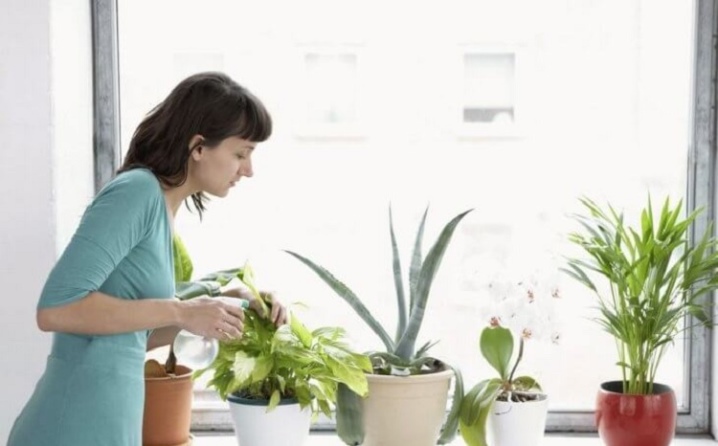
When is it needed?
Hydrogen peroxide is essential for caring for home flowers, but it's worth noting that they require an extremely weak solution of this substance. It is strictly forbidden to take pure hydrogen peroxide. When caring for indoor plants, this substance is used for both root and foliar processing... Peroxide can be used to treat tools, hands, and pots during planting or transplanting.
Important! For indoor flowers, you can use exclusively freshly prepared hydrogen peroxide solution.
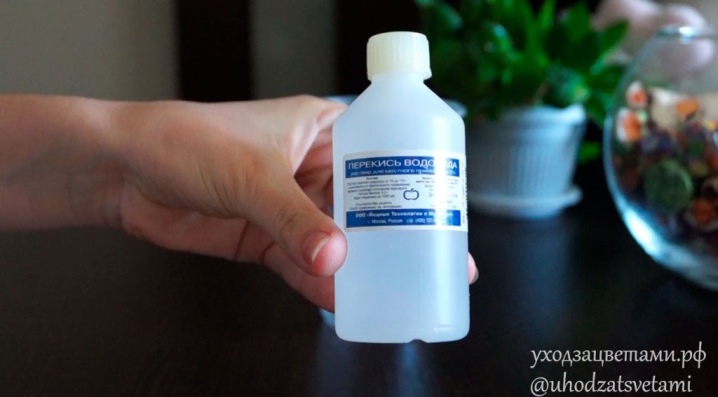
Florists note that for watering it is enough to add only 2-3 drops of this preparation to the water... Active oxygen superbly displaces chlorine atoms. As a result, the soil is saturated with the necessary elements. After several such waterings, the plants become beautiful, their flowering period increases, they begin to grow actively, and also get rid of various parasites and diseases.
This drug excellently helps in the presence of fungal diseases. Hydrogen peroxide also has a positive effect on the root system. The roots become stronger, their decay stops. That's why such a solution is often used as a fertilizer.

How to prepare the solution?
First you need to prepare the water. It can be taken from the water supply, but it should be left for 6-8 hours to get rid of the chlorine. Although some growers use rainwater because it already contains peroxide, which is known to have a positive effect on the health of indoor plants.
So, after preparing the water, you need to buy peroxide. It should be diluted with water in certain proportions, since a various dosage is used, which depends on the purpose of the solution:
- for daily watering, you will need to add only 2-3 drops of 3% peroxide per 1000 ml of water;
- for prevention purposes, the solution is used for soil cultivation, while only 3 ml of peroxide per 1000 ml of water is required for its preparation;
- if it is necessary to process the soil immediately before planting the culture, then it is necessary to take 30 ml of peroxide for 5 liters of water.
It is worth emphasizing that peroxide solution is often used as a prophylactic agent for various diseases, as well as in their treatment. With its help, young seedlings become stronger, and wilted plants begin to grow better.
For example, if you need to destroy late blight, you will need to dilute 30 drops of iodine and 3 tbsp in 10 liters of cold water. tablespoons of peroxide.
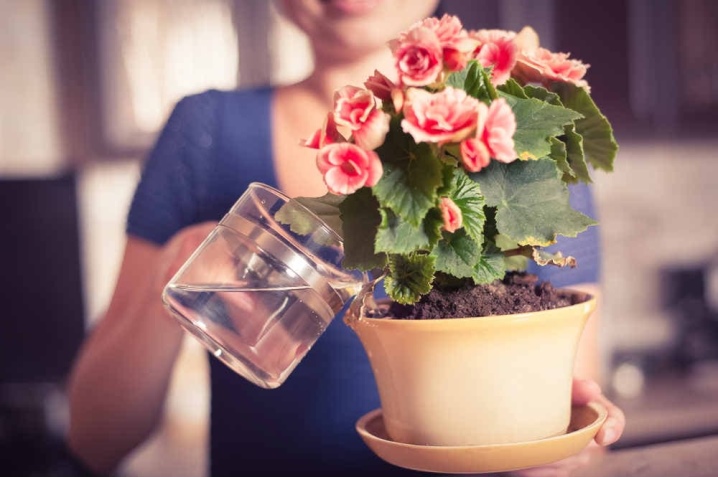
Application methods
Every grower should know that the use of hydrogen peroxide in its pure form is deadly for plants, as it burns the crop. You need to know the exact dosage in order to properly use the peroxide, while not harming the houseplants. Quite often, a peroxide solution is used as a root and foliar feeding for decorative deciduous plants.... This solution is used when planting or transplanting them. It is customary to use it for processing both hands and tools intended for gardening.

Watering
If you use a solution of hydrogen peroxide, then you can create additional aeration of the soil, which contributes to the rapid absorption of nutrients that are contained in the soil itself. To prepare a solution for watering the soil, should be dissolved in 1000 ml of water 10 ml of peroxide. It is enough to irrigate 1-2 times a week in summer and only once every 2 weeks in winter.
Peroxide has excellent bactericidal properties, so it is used to combat root rot, late blight and black leg. Typically, this kind of disease occurs when the water for irrigation contains a small amount of oxygen. In this case, it is worth combining a phosphorus supplement and 3% peroxide.
If you take a standard package of phosphate fertilizer, then only 20 ml of peroxide will be enough. It should only be used 2 times a week.
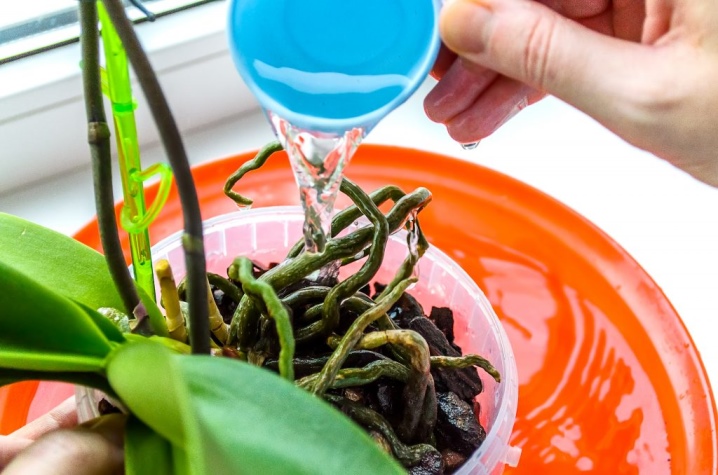
In order for watering with a peroxide solution to bring an exceptionally positive effect, the following rules should be adhered to:
- initially it is worth clearing the topsoil of debris (fallen leaves), since it leads to decay, as a result, pathogenic microorganisms begin to multiply;
- should gently water, since the soil must be thoroughly saturated with the solution; remember that overflow negatively affects the condition of the plant's root system, since it can begin to rot, it is better to simply drain the remaining water after watering;
- the topsoil needs loosening, which will improve the supply of oxygen to the root system of the home flower.
It is necessary to pay attention to the fact that certain plants only need bottom watering, for example, Saintpaulia, orchids. To water violets, roses or orchids, you will need to prepare the following composition:
- 1000 ml of water;
- 30 drops of iodine;
- 2 tbsp. tablespoons of peroxide.
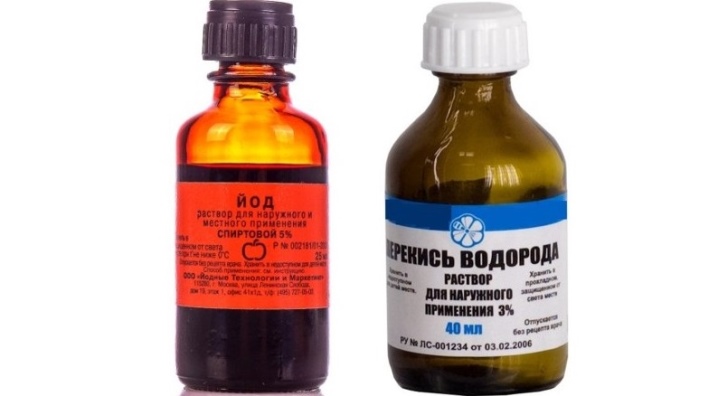
Top dressing
Hydrogen peroxide is quite often used to create fertilizer that will save the death of a wilted plant, as well as activate its growth. If the crop is irrigated, the composition of the soil will significantly improve, the amount of nutrients and microelements in it will increase. If you regularly fertilize your home plants with hydrogen peroxide, you can soon expect the following results:
- foliage becomes darker;
- new buds are formed, if we talk about flowering species;
- the branches acquire elasticity.
The complex should not use synthetic fertilizers. To feed home plants, it is worth using exclusively natural formulations.

Spraying
Peroxide solution is great not only for watering, but also for spraying. If you plan to spray the plants, then it is worth lifting the leaves up, while the procedure itself must be performed 2-3 times a week... With the help of spraying, the foliage becomes thicker, its turgor is preserved, young shoots grow better, and fading stems become stronger. With the help of such spraying, diseases such as root rot, late blight, black leg and mold can be defeated. This becomes an excellent prevention of insect pests.
Important! Prepare the solution immediately before using it.
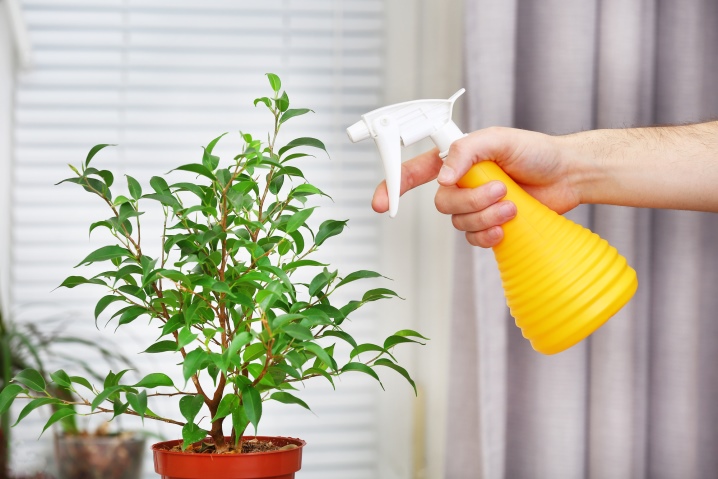
For roots
If you use peroxide for the root system, then it is an excellent substitute for organic fertilizer. Wherein do not use other fertilizers, because peroxide will be enough. You can take rainwater, tap water, or melt water. Watering the soil with hydrogen peroxide improves root nutrition, prevents rotting, and also disinfects the soil. Watering a home plant with it should be done once every 2 weeks.
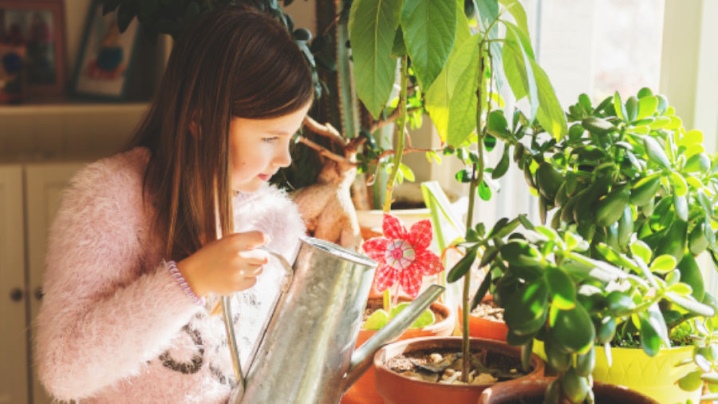
Seed treatment before sowing
Before planting seeds, it is better to disinfect them. To do this, prepare the following solution:
- 1000 ml of water;
- 30 ml of hydrogen peroxide;
- 2-3 drops of dishwashing liquid (liquid);
- 20 ml of alcohol.
If the seeds are soaked in a solution with peroxide for 2-3 hours, they will germinate faster. It is enough to mix 0.25 l of water and 30 drops of peroxide.
Such treatment significantly softens the seed coat, so they germinate faster, and are also protected from pathogenic microorganisms.
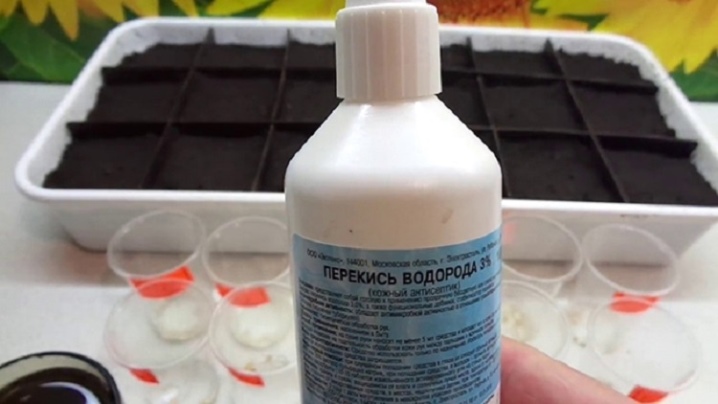
Further it is worth making a pick of the seedlings. Now they need to be treated with fresh solution every day. Regular processing helps protect the plant from pests such as:
- nematodes;
- thrips;
- scabbards;
- spider mites.
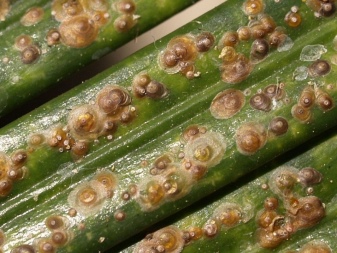
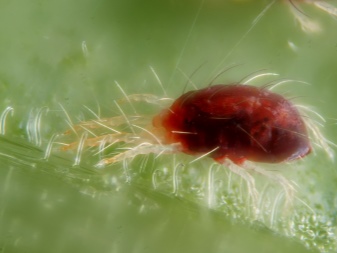
Precautionary measures
Many growers note that the use of peroxide is suitable for all plants, since this drug has no contraindications. If you pay attention to its chemical composition, then it is similar to distilled water, which is why it is well tolerated by indoor plants. Many people point out that hydrogen peroxide has an extremely positive effect on plants. But you should adhere to the following rules:
- the soil before watering should be cleaned of fallen leaves;
- only freshly prepared solution should be used;
- you need to adhere to the recommended dosage when preparing the solution;
- you do not need to use several types of dressings at the same time;
- if a white coating appears on the stems, roots or leaves, then it is worth refraining from this kind of feeding for a while.
Since hydrogen peroxide is a very strong oxidizing agent, it can only be used diluted.
You should not use the drug quite often, it is enough to water with it only 1 time per week, while it is worth watering the plant 3-4 times a week.
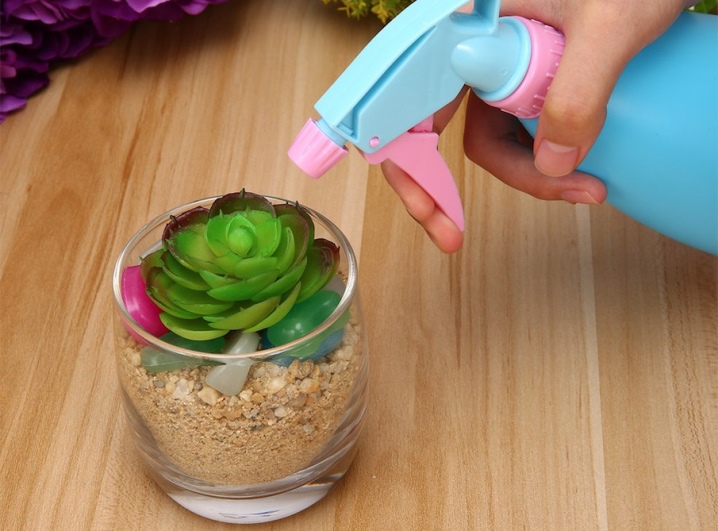
Review overview
Hydrogen peroxide is used by many flower growers when caring for indoor flowers. They note that this drug perfectly nourishes plants, promotes their rapid growth and makes them more attractive in appearance. It helps protect flowers from various parasites and diseases. Hydrogen peroxide is inexpensive, while it lasts for a long time.
But don't overdo it in everything you need to know when to stop... An excess of peroxide will lead to negative consequences, up to the death of the plant. It is worth noting that an improperly prepared solution can cause irreparable harm to the plant, so you should be quite careful when using it.
For information on how to properly prepare the solution, see the next video.































Thanks for the advice. I'll start using peroxide.
Thanks! Useful information☺
The comment was sent successfully.